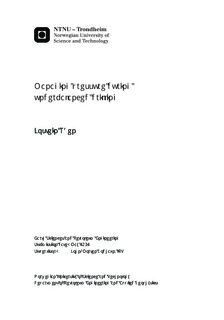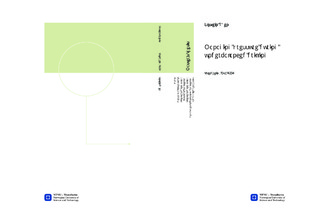| dc.contributor.advisor | Godhavn, John-Morten | nb_NO |
| dc.contributor.author | Råen, Jostein | nb_NO |
| dc.date.accessioned | 2014-12-19T12:16:09Z | |
| dc.date.available | 2014-12-19T12:16:09Z | |
| dc.date.created | 2012-11-08 | nb_NO |
| dc.date.issued | 2012 | nb_NO |
| dc.identifier | 565890 | nb_NO |
| dc.identifier | ntnudaim:7420 | nb_NO |
| dc.identifier.uri | http://hdl.handle.net/11250/239726 | |
| dc.description.abstract | AbstractUnderbalanced drilling has received more and more attention in recent years. The reason for that may be because many oil fields, especially on the Norwegian continental shelf, have started to show signs of aging. By that I mean that the production is going down, and reservoir pressure is more and more reduced. Underbalanced drilling is a technique that is suitable for dealing with these challenges. The major benefits like for example reduced reservoir damage, and the ability to drill through narrow pressure windows, both help in prolonging the life of mature fields. To be able to perform a successful underbalanced drilling operation control over the pressure in the well is crucial. The bottom hole pressure must be controlled and adjusted as the operation goes on to make sure that underbalanced conditions are maintained at all times. My main goal with this thesis have been to demonstrate how the bottom hole pressure can be controlled by different parameters, and the investigation of different scenarios that can occur during an underbalanced operation and how they affect the bottom hole pressure.The Drillbench package contains two multiphase flow simulators that are specialized for underbalanced drilling. The Steadyflodrill is a steady-state simulator and the Dynaflodrill is a dynamic simulator. The dominant simulator in my work has been the Dynaflodrill.During drilling the bottom hole pressure is adjusted and controlled with three different parameters. These are the liquid injection rate, gas injection rate and the choke opening. Which of these parameters that will change the bottom hole pressure the fastest will vary with the type of well being drilled. Doing a connection during underbalanced drilling can be problematic, but this will vary with the type of reservoir being drilled. Separation of fluids in the wellbore when circulation is halted can cause severe fluctuations in the bottom hole pressure. By using the choke these fluctuations can be reduced to an acceptable level. Tripping underbalanced also offer challenges regarding separation of fluids which will kill the well after some time since the circulation is stopped for a long period. Also reservoirs containing heavier oil will be killed eventually if the reservoir is under pressured. Drilling through narrow pressure windows can be problematic if a pump failure should occur. This failure can lead to a sudden drop in the bottom hole pressure which can cause it to drop under the collapse pressure limit of the formation and cause for instance a stuck-pipe situation. Hitting an unexpected high pressure zone can lead to a well control situation due to an increased influx of formation fluids which exceeds the limits of the separator.Automation of underbalanced drilling has been difficult due to low data transportation rate from the bottom to surface, and difficulties with correct modeling of the multiphase flow in the well. A possibility can be to make use of the pump pressure and make an estimation of the bottom hole pressure based on that and a model of the friction in the drill pipes. | nb_NO |
| dc.language | eng | nb_NO |
| dc.publisher | Institutt for petroleumsteknologi og anvendt geofysikk | nb_NO |
| dc.subject | ntnudaim:7420 | no_NO |
| dc.subject | MTGEOP Geofag og petroleumsteknologi | no_NO |
| dc.subject | Boreteknologi | no_NO |
| dc.title | Managing pressure during underbalanced drilling | nb_NO |
| dc.type | Master thesis | nb_NO |
| dc.source.pagenumber | 111 | nb_NO |
| dc.contributor.department | Norges teknisk-naturvitenskapelige universitet, Fakultet for ingeniørvitenskap og teknologi, Institutt for petroleumsteknologi og anvendt geofysikk | nb_NO |

